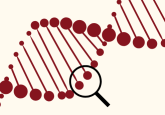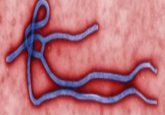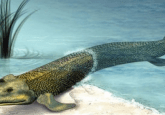Sequencing Rudolph’s genome

Rudolph the Red-nosed Reindeer had a very…interesting genome?

We’re familiar with Rudolph pulling Santa’s sleigh, but real life reindeer also have interesting characteristics that may come to light thanks to genome sequencing.
Rudolph the reindeer was famous for leading Santa’s sleigh through the foggy Christmas night. Although real life reindeer neither fly nor sport glowing noses, they are the only domesticated members of the deer family. Reindeer have lived alongside humans for thousands of years in parts of North America, Asia, and Europe. To better understand the domestication and evolutionary history of the reindeer, a team of researchers from two universities in China recently sequenced the reindeer genome, which they reported in the journal GigaScience.
“We began to focus on the deer family and then focused on the reindeer because we found this animal very interesting,” said Zhipeng Li from the Chinese Academy of Agricultural Sciences, first author of the study. Unlike most deer species, both male and female reindeer grow antlers, which some people use for their potential medicinal properties. Also, reindeer milk contains more protein and less lactose compared to cow milk. “We wanted to illustrate the genetic basis of the interesting characteristics of the reindeer, like the antlers and the domestication process,” said Li.
Li’s team obtained a sample of blood from a female reindeer in China and performed whole genome shotgun sequencing, after which they assembled and annotated the genome. They used phylogenetic analyses to determine that the reindeer diverged from its deer ancestors 29.5 million years ago.
The team compared the reindeer genome to genomes of related domesticated animals such as sheep, goats, and cows. They found that the reindeer genome was 2.64-Gb long, smaller than that of goats, but similar to that of sheep. Furthermore, the researchers annotated unique areas of the reindeer genome not found in other animals, which they hope to correlate with the unique and interesting characteristics of reindeer.
“[Genome sequencing] is often a first glimpse into what changes in a genome might be associated with the unique biology of the organism,” said Casey Dunn from Yale University, who was not involved in the study.
With the looming threat of climate change, exploring the reindeer genome should help scientists to better understand new risks that may threaten these animals in the coming years. “It’s especially relevant now that we live in a warming world,” said Dunn. Having access to the complete reindeer genome now opens doors for scientists to better understand the species, particularly in terms of its relationship to humans.





